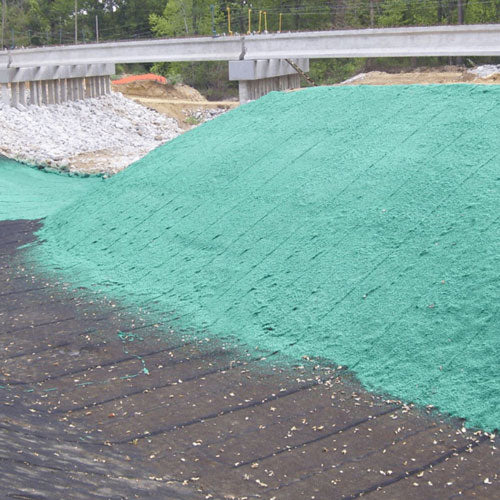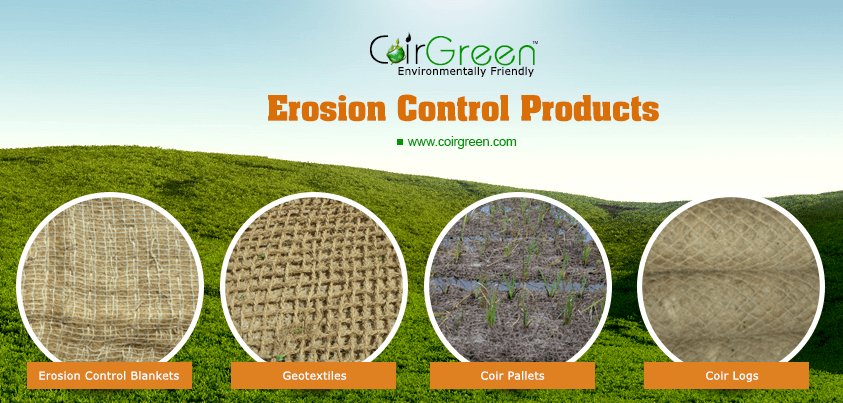Erosion Control Solutions: Protecting the Atmosphere
Wiki Article
Efficient Disintegration Control Techniques for Lasting Land Management
Are you looking for ways to successfully take care of disintegration on your land? Discover the various kinds of erosion and their effect on your land, as well as natural methods to regulate disintegration. Learn just how to implement efficient disintegration control steps and ensure appropriate monitoring and maintenance.Value of Erosion Control in Sustainable Land Management
Due to the fact that it aids stop dirt deterioration and loss,Disintegration control is vital for lasting land administration. By executing reliable erosion control techniques, you can ensure the long-term health and productivity of your land. Without correct disintegration control steps, dirt disintegration can happen, resulting in the loss of useful topsoil that is abundant in nutrients essential for plant development.One of the major factors disintegration control is crucial is since it aids to maintain soil fertility. In addition, disintegration can lead to sedimentation in nearby water bodies, which can adversely influence marine communities.
One more trick advantage of erosion control is the prevention of land degradation. By carrying out disintegration control techniques such as terracing, shape plowing, and the usage of cover plants, you can assist avoid land degradation and preserve the wellness of your land.

Types of Erosion and Their Impact on Land
Comprehending the numerous types of erosion and exactly how they affect the land can aid you execute better land monitoring methods. Disintegration is the procedure whereby soil, rocks, and various other materials are slowly used away and moved by natural pressures such as wind, ice, and water. There are four primary types of erosion: sheet disintegration, rill erosion, gully erosion, and mass movement disintegration.Sheet erosion happens when a thin layer of dirt is removed consistently from the surface of the land. Rill erosion, on the other hand, happens when small channels or rivulets are created on the land due to the flow of water.
Gully disintegration is a lot more severe and happens when larger networks or gullies are formed due to the constant circulation of water. Mass activity disintegration refers to the activity of large amounts of soil and rocks downhill due to the force of gravity.
Comprehending these various sorts of erosion and their effect on the land is important for efficient land monitoring. By applying disintegration control strategies such as terracing, contour plowing, and reforestation, you can reduce erosion and protect the stability of the land. Additionally, practicing great land administration approaches like appropriate crop rotation, maintaining ground cover, and using debris control measures can even more help in avoiding disintegration.
Natural Erosion Control Techniques for Sustainable Land Administration
By executing natural erosion control techniques, you can efficiently handle and protect the stability of your land. In areas where disintegration is a significant issue, mounting erosion control coverings or floor coverings can be advantageous. On the whole, by using these natural erosion control techniques, you can properly handle and secure your land from erosion, ensuring its long-lasting sustainability.Applying Effective Erosion Control Measures

To successfully handle and safeguard your land from erosion, you must take into consideration executing tried and tested techniques that can aid reduce the danger. One such approach is making use of disintegration control blankets. These blankets, made from artificial products or all-natural fibers, are positioned on the soil surface to support it and protect against erosion. They assist maintain wetness, lower debris runoff, and promote the development of plants. An additional effective strategy is using terracing. Terracing involves creating degree systems on sloping land, which aids to slow down overflow and stop disintegration. It likewise enables for the growing of crops on the terraced slopes. In addition, planting greenery is a critical action in erosion control. Yards, trees, and hedges have extensive origin systems that bind the dirt with each other, decreasing disintegration triggered by wind and water. Moreover, setting up sediment control procedures such as silt fences and sediment ponds can aid catch debris and stop it from getting in close-by water bodies. These procedures are especially crucial throughout construction tasks. By applying these verified disintegration control approaches, you can properly shield your land and minimize the threat of erosion and its damaging results.
Tracking and Maintenance of Disintegration Control Methods
my responseWhen tracking and maintaining disintegration control actions, it is very important to consistently examine the disintegration control coverings, balconies, greenery, and debris control measures YOURURL.com to guarantee they are functioning effectively and effectively stopping erosion (Memphis Erosion Control Solutions trenching). By conducting regular assessments, you can determine any issues or deficiencies in the erosion control methods and take essential actions to rectify them
Start by checking the erosion control blankets. Look for signs of damage or wear, such as tears or revealed dirt.
Following, evaluate the balconies. Inspect for indicators of disintegration, such as debris accumulation or unequal surface areas. Guarantee that the terraces are appropriately created and kept to divert water flow and minimize disintegration. Clear any type of gathered debris to preserve their performance.
Review the plant life in the erosion control area. Ensure that it is healthy and balanced and sufficiently covers the soil. Seek any kind of signs of plant tension or condition, and address them immediately. Proper vegetation insurance coverage aids maintain the soil and prevent disintegration.
Finally, examine the debris control steps, such as sediment containers or sediment fences. Make sure they are properly mounted and working as planned. Remove any type of built up debris and ensure that the controls are appropriately maintained.
Normal tracking and upkeep of disintegration control measures are vital for their long-term performance in avoiding disintegration and keeping lasting land administration practices.
Conclusion
In final thought, you must prioritize erosion control for sustainable land monitoring. By recognizing the various kinds of disintegration and their impact on the land, you can execute effective natural disintegration control techniques.Discover the various types of erosion and their effect on your land, as well as natural approaches to manage disintegration. There are four primary kinds of erosion: sheet disintegration, rill erosion, gully disintegration, and mass movement erosion.
By implementing erosion control techniques such as terracing, contour plowing, and reforestation, you can reduce disintegration and preserve the integrity of the land (Memphis Erosion Control Solutions erosion control). On the whole, by utilizing these natural disintegration control techniques, you can properly manage and safeguard your land from disintegration, ensuring its Full Article lasting sustainability
By recognizing the different types of erosion and their influence on the land, you can execute efficient all-natural disintegration control approaches.
Report this wiki page